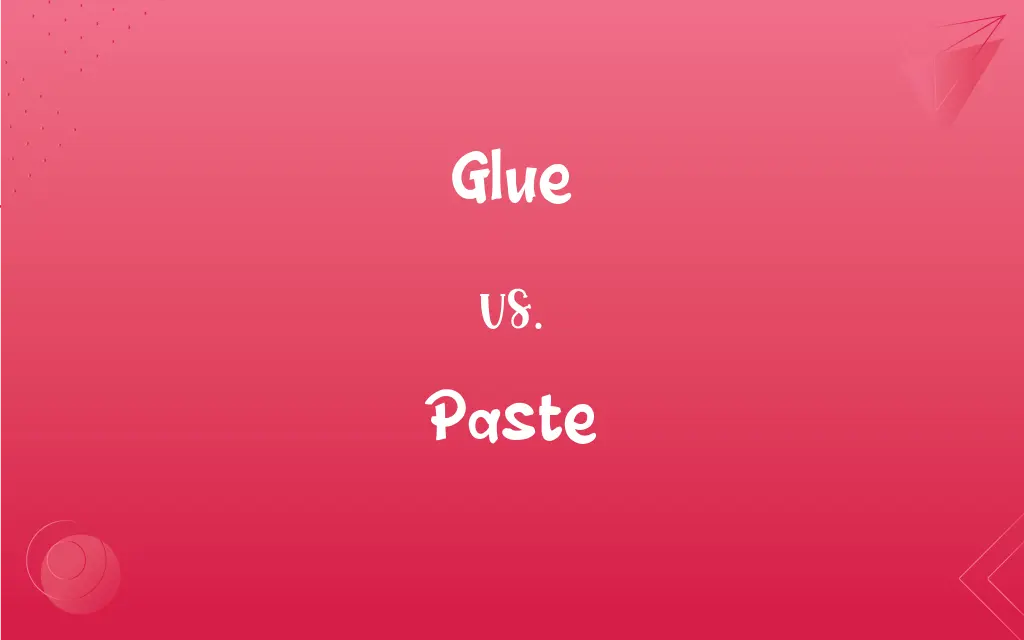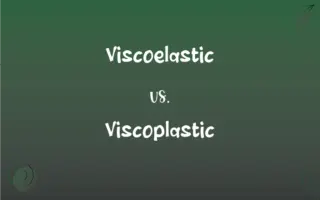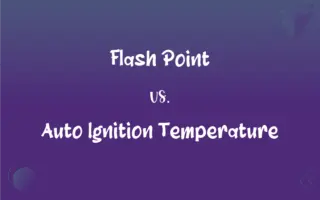Glue vs. Paste: What's the Difference?
Edited by Aimie Carlson || By Janet White || Published on January 22, 2024
Glue is a strong adhesive substance used for bonding materials, while paste is a thick, soft, moist substance used for sticking, especially in paper crafts.

Key Differences
Glue is typically a more fluid and strong adhesive, used for permanently bonding various materials, whereas paste is thicker, less strong, and often used for paper-based applications.
The chemical composition of glue can vary widely, designed for specific materials like wood, metal, or plastic, while paste is generally made from starch or cellulose, making it more suitable for art and craft projects.
Glue often requires time to set and bond, providing a durable hold, whereas paste offers immediate adhesion but with less long-term durability.
In terms of toxicity and safety, many glues contain chemicals that require caution in handling, while paste, especially those used in schools, is typically non-toxic and safe for children.
Glue is available in various forms like liquid, gel, or sticks, tailored for different applications, while paste is commonly found in tubs or jars and is applied with a brush or fingers in crafts.
ADVERTISEMENT
Comparison Chart
Adhesive Strength
Typically stronger and more durable.
Less strong, suitable for temporary hold.
Materials Used On
Varied, including wood, metal, plastic.
Primarily paper and light craft materials.
Composition
Chemical-based with varied formulas.
Usually starch or cellulose-based.
Setting Time
Longer setting time for strong bond.
Quick adhesion, less durable.
Safety
Often toxic, requires careful handling.
Generally non-toxic, safe for children.
ADVERTISEMENT
Glue and Paste Definitions
Glue
An adhesive for bonding various materials.
Wood glue is essential for carpentry work.
Paste
A thick, tacky material for temporary bonding.
He used paste to stick the poster on the wall.
Glue
A liquid or gel used in crafts and construction.
He applied glue to the wallpaper.
Paste
A starch-based glue for paper and crafts.
The children used paste for their art project.
Glue
A substance used for sticking objects together.
She used glue to repair the broken vase.
Paste
A soft, moist, adhesive substance.
She spread paste on the back of the wallpaper.
Glue
A strong, sticky substance for permanent bonds.
The glue held the pieces firmly together.
Paste
A craft adhesive for light materials.
She preferred paste for her scrapbooking hobby.
Glue
A chemical-based adhesive for durable joining.
Industrial glue was used in the assembly process.
Paste
A non-toxic adhesive used in schools.
The teacher handed out paste for the collage work.
Glue
A strong liquid adhesive obtained by boiling collagenous animal parts such as bones, hides, and hooves into hard gelatin and then adding water.
Paste
A smooth viscous mixture, as of flour and water or of starch and water, that is used as an adhesive for joining light materials, such as paper and cloth.
Glue
Any of various similar adhesives, such as paste, mucilage, or epoxy.
Paste
The moist clay or clay mixture used in making porcelain or pottery. Also called pâte.
FAQs
What is the main use of glue?
Glue is mainly used for strong, permanent bonding of materials.
Can glue bond heavy materials?
Yes, certain types of glue are formulated for heavy materials.
Is paste suitable for outdoor use?
No, paste is not ideal for outdoor or moisture-exposed conditions.
Can paste dry out over time?
Yes, paste can dry out if not properly sealed.
Is glue waterproof?
Some glues are waterproof, but not all.
Can paste be made at home?
Yes, paste can be homemade with simple ingredients like flour.
Can glue be used on fabric?
Special fabric glues are available for this purpose.
Is paste easy to clean up?
Yes, paste is usually water-soluble and easy to clean.
Is glue resistant to heat?
Some glues are heat-resistant, but it varies by type.
Does glue have a shelf life?
Yes, glue can lose its effectiveness over time.
Can paste be used on materials other than paper?
While primarily for paper, paste can be used on other light materials.
Is paste safe for children?
Most pastes, especially school pastes, are safe for children.
Does paste work on plastic?
Paste is generally not effective on plastic.
Is glue affected by humidity?
Some glues can be affected by high humidity.
Can paste be colored or painted over?
Yes, paste can be colored or painted over once dry.
Is glue flammable?
Some glues are flammable; it depends on the chemical composition.
Can paste expire?
Yes, paste can expire and lose its adhesive quality.
Are there non-toxic glues?
Yes, there are non-toxic glues available.
How long does glue take to set?
Setting time varies, ranging from minutes to hours.
Can paste be used for wallpaper?
Yes, paste is commonly used for hanging wallpaper.
About Author
Written by
Janet WhiteJanet White has been an esteemed writer and blogger for Difference Wiki. Holding a Master's degree in Science and Medical Journalism from the prestigious Boston University, she has consistently demonstrated her expertise and passion for her field. When she's not immersed in her work, Janet relishes her time exercising, delving into a good book, and cherishing moments with friends and family.
Edited by
Aimie CarlsonAimie Carlson, holding a master's degree in English literature, is a fervent English language enthusiast. She lends her writing talents to Difference Wiki, a prominent website that specializes in comparisons, offering readers insightful analyses that both captivate and inform.































































